#demand forecasting
Explore tagged Tumblr posts
Text

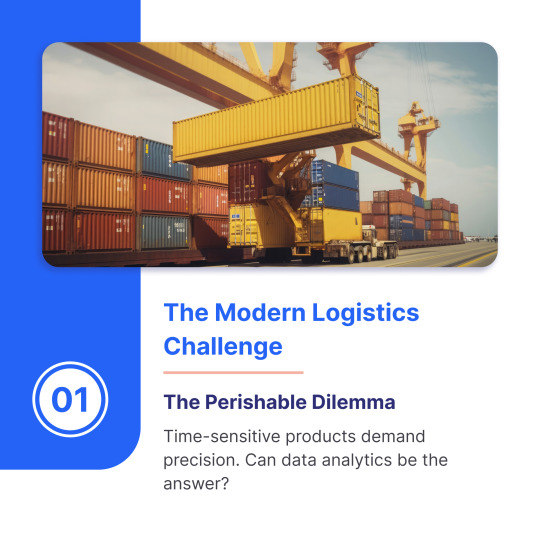
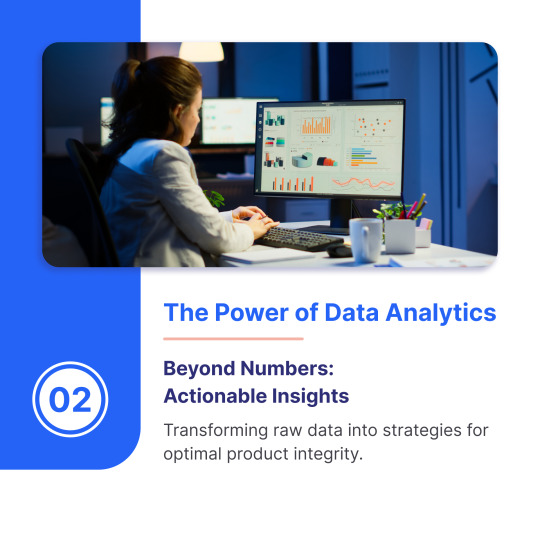

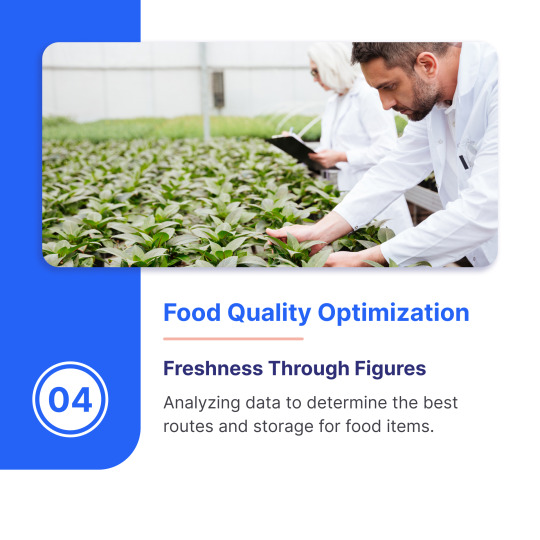

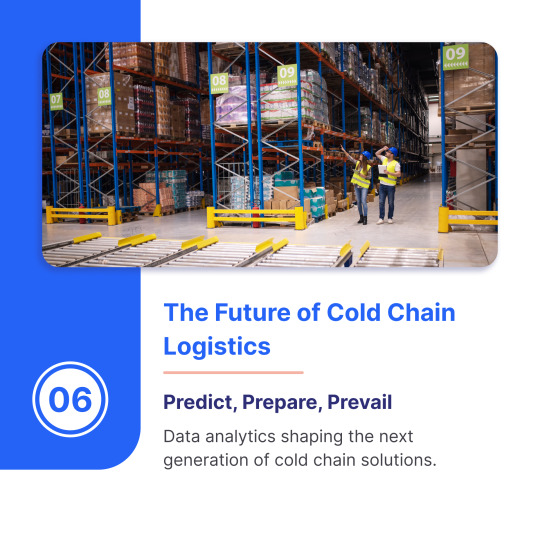
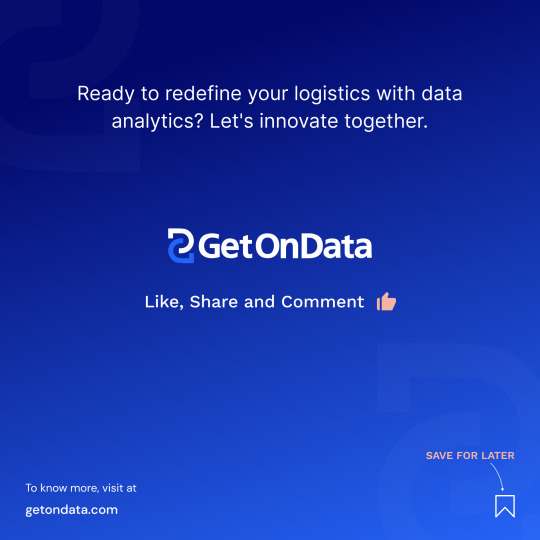
Dive into the future of perishable products with us! Discover how data-driven insights are shaping the way we handle, store, and consume our fresh goods. Let's embrace a smarter, sustainable future together.
#preishable#product#data driven#logistics#data analytics#data#scm#supplychain#demand forecasting#inventorymanagement#food#food security#sustainability#getondata
2 notes
·
View notes
Text
Beyond Forecasting: Integrating Supply Chain Planning Systems with Business Strategy
In today’s fast-paced global market, businesses face the constant challenge of managing the complex flow of goods, services, and information across their supply chains. The ability to balance dynamic demand with supply is crucial to staying competitive and profitable. This is where Supply Chain Planning (SCP) systems come into play—powerful software solutions designed to streamline operations,…

View On WordPress
#ai in supply chain planning#business#Business Intelligence#demand and supply chain#Demand Forecasting#demand management#inventory management#Market Intelligence#s & op#SCP#Supply Chain#supply chain forecasting
0 notes
Text
Demand Forecasting as a Competitive Differentiator in Supply Chains
In 2025, demand forecasting serves as a competitive differentiator in supply chains. Companies that can predict demand more accurately gain a significant edge over those that rely on guesswork. Forecasting enables lean inventory, faster delivery, and better supplier coordination. It also supports sustainable practices by reducing waste and optimizing resources. With AI-powered tools, businesses can now forecast with precision, adapting in real-time to changing consumer preferences. This agility allows companies to outperform competitors, especially in fast-paced industries. Demand forecasting is no longer just about planning—it's about staying ahead. Those who master it lead the market with efficient, responsive, and customer-centric supply chains.
0 notes
Text
youtube
#supply and demand#demand generation#demand letter#demand avoidance#demand forecasting#demand justice#Youtube
0 notes
Text
#Demand Forecasting#Supply Chain Management#Retail#Inventory Optimization#Predictive Analytics#Azilen Technologies
0 notes
Text
AI in Supply Chain Market to be Worth $58.55 Billion by 2031
Meticulous Research®—a leading global market research company, published a research report titled, ‘AI in Supply Chain Market by Offering (Hardware, Software, Other), Technology (ML, NLP, RPA, Other), Deployment Mode, Application (Demand Forecasting, Other), End-use Industry (Manufacturing, Retail, F&B, Other) & Geography - Global Forecast to 2031’
According to this latest publication from Meticulous Research®, the AI in supply chain market is projected to reach $58.55 billion by 2031, at a CAGR of 40.4% from 2024 to 2031. The growth of the AI in supply chain market is driven by the increasing incorporation of artificial intelligence in supply chain operations and the rising need for greater visibility & transparency in supply chain processes. However, the high procurement & operating costs of AI-based supply chain solutions and the lack of supporting infrastructure restrain the growth of this market.
Furthermore, the growing demand for AI-based business automation solutions is expected to generate growth opportunities for the players operating in this market. However, performance issues in integrating data from multiple sources and data security & privacy concerns are major challenges impacting market growth. Additionally, the rising demand for cloud-based supply chain solutions is a prominent trend in the AI in supply chain market.
Based on offering, the AI in supply chain market is segmented into hardware, software, and services. In 2024, the hardware segment is expected to account for the largest share of 44.4% of the AI in supply chain market. The large market share of this segment is attributed to advancements in data center capabilities, the growing need for storage hardware due to increasing storage requirements for AI applications, the crucial need for constant connectivity in the supply chain operations, and the emphasis on product development and enhancement by manufacturers. For instance, in January 2023, Intel Corporation launched its 4th Gen Intel Xeon Scalable processors (code-named Sapphire Rapids), the Intel Xeon CPU Max Series (code-named Sapphire Rapids HBM), and the Intel Data Center GPU Max Series (code-named Ponte Vecchio). These new processors deliver significant improvements in data center performance, efficiency, security, and AI capabilities.
However, the software segment is expected to record the highest CAGR of 43.2% during the forecast period. This segment's growth is driven by the rising focus on product development and the enhancement of supply chain software and the benefits offered by supply chain software in facilitating supply chain visibility and centralized operations.
Download Sample Report Here @ https://www.meticulousresearch.com/download-sample-report/cp_id=5064
Based on technology, the AI in supply chain market is segmented into machine learning, computer vision, natural language processing, context-aware computing, and robotic process automation. In 2024, the machine learning segment is expected to account for the largest share of 63.0% of the AI in supply chain market. The large market share of this segment is attributed to the advancements in data center capabilities, increasing deployment of machine learning solutions and its ability to perform tasks without relying on human input, and the rapid adoption of cloud-based technology across several industries. For instance, in June 2022, FedEx Corporation (U.S.) invested in FourKites, Inc. (U.S.), a supply chain visibility startup. This strategic collaboration allows FedEx to leverage its machine learning and AI capabilities with data from FedEx, enhancing its operational efficiency and visibility.
However, the robotic process automation segment is expected to record the highest CAGR of 42.9% during the forecast period. The growth of this segment is driven by the increased adoption of RPA across various industries and the rising demand for automating business processes to meet heightened customer expectations.
Based on deployment mode, the AI in supply chain market is segmented into cloud-based deployments and on-premise deployments. In 2024, the cloud-based deployments segment is expected to account for the larger share of 75.6% of the AI in supply chain market. The large market share of this segment is attributed to the increasing avenues for cloud-based deployments, the superior flexibility and affordability offered by cloud-based deployments, and the increasing adoption of cloud-based solutions by small & medium-sized enterprises.
Moreover, the cloud-based deployments segment is expected to record the highest CAGR during the forecast period. The rapid development of new security measures for cloud-based deployments is expected to drive this segment's growth in the coming years.
Based on application, the AI in supply chain market is segmented into demand forecasting, supply chain planning, warehouse management, fleet management, risk management, inventory management, predictive maintenance, real-time supply chain visibility, and other applications. In 2024, the demand forecasting segment is expected to account for the largest share of 25.2% of the AI in supply chain market. The large market share of this segment is attributed to the rising initiatives to integrate AI capabilities in supply chain solutions, dynamic changes in customer behaviors and expectations, and the rising need to achieve accuracy and resilience in the supply chain. For instance, in March 2023, Zionex, Inc. (South Korea), a prominent provider of advanced supply chain and integrated business planning platforms, launched PlanNEL Beta. This AI-powered SaaS platform is designed for demand forecasting and inventory optimization.
However, the real-time supply chain visibility segment is expected to record the highest CAGR during the forecast period. This segment's growth is driven by the rising integration of AI capabilities into supply chains to obtain real-time data on them.
Based on end-use industry, the AI in supply chain market is segmented into manufacturing, food and beverage, healthcare & pharmaceuticals, automotive, retail, building & construction, medical devices & consumables, aerospace & defense, and other end-use industries. In 2024, the manufacturing segment is expected to account for the largest share of 23.1% of the AI in supply chain market. The large market share of this segment is attributed to the increasing number of manufacturing companies, favorable initiatives to integrate artificial capabilities in the supply chain, and the increasing focus on achieving accuracy and resilience in the supply chain among manufacturers.
However, the retail segment is expected to record the highest CAGR of 47.8% during the forecast period. This segment's growth is driven by the rising integration of AI capabilities in the retail supply chain to forecast inventory and demand and retailers' growing focus on meeting consumer expectations.
Based on geography, the AI in supply chain market is segmented into North America, Europe, Asia-Pacific, Latin America, and the Middle East & Africa. In 2024, Asia-Pacific is expected to account for the largest share of 36.9% of the AI in supply chain market. The large market share of this region is attributed to the rapid pace of digitalization and modernization across industries, the advent of Industry 4.0, and the growing adoption of advanced technologies across various businesses.
Moreover, the Asia-Pacific region is projected to record the highest CAGR of 42.7% during the forecast period. This market's growth is driven by the proliferation of advanced supply chain solutions, the rising deployment of AI tools across the region, and efforts by major market players to implement AI technology across various sectors.
Key Players
Some of the key players operating in the AI in supply chain market are IBM Corporation (U.S.), SAP SE (Germany), Microsoft Corporation (U.S.), Google LLC (U.S.), Amazon Web Services, Inc. (U.S.), Intel Corporation (U.S.), NVIDIA Corporation (U.S.), Oracle Corporation (U.S.), C3.ai, Inc. (U.S.), Samsung SDS CO., Ltd. (South Korea), Coupa Software Inc. (U.S.), Micron Technology, Inc. (U.S.), Advanced Micro Devices, Inc. (U.S.), FedEx Corporation (U.S.), and Deutsche Post DHL Group (Germany).
Complete Report Here : https://www.meticulousresearch.com/product/ai-in-supply-chain-market-5064
Key questions answered in the report:
Which are the high-growth market segments based on offering, technology, deployment mode, application, and end-use industry?
What was the historical market for AI in supply chain?
What are the market forecasts and estimates for the period 2024–2031?
What are the major drivers, restraints, and opportunities in the AI in supply chain market?
Who are the major players, and what shares do they hold in the AI in supply chain market?
What is the competitive landscape like in the AI in supply chain market?
What are the recent developments in AI in supply chain market?
What are the different strategies adopted by the major players in AI in supply chain market?
What are the key geographic trends, and which are the high-growth countries?
Who are the local emerging players in the AI in supply chain market, and how do they compete with the other players?
Contact Us: Meticulous Research® Email- [email protected] Contact Sales- +1-646-781-8004 Connect with us on LinkedIn- https://www.linkedin.com/company/meticulous-research
#AI in Supply Chain Market#AI-powered Supply Chain#Demand Forecasting#Real-time Supply Chain Visibility#Supply Chain Planning#Inventory Management#Fleet Management#Warehouse Management
0 notes
Text
Enhancing Demand Planning with AI and ML Techniques

Sales and Operations Planning (S&OP) has evolved with the integration of advanced technologies like Artificial Intelligence (AI) and Machine Learning (ML), enabling businesses to tackle complex demand forecasting challenges with greater accuracy. AI and ML models offer a sophisticated approach to understanding seasonality, trends, and cyclic behavior in demand, providing businesses with predictive capabilities that were once unimaginable.
AI/ML in Demand Planning
AI and ML techniques are pivotal in addressing demand planning challenges, such as predicting seasonal spikes, understanding long-term trends, and capturing cyclical patterns in the demand cycle. Machine learning models analyze vast datasets to identify patterns and forecast future demand based on historical data. These techniques can predict changes in demand that may not be immediately apparent through traditional statistical methods.
For instance, seasonality is a common behavior in many industries—demand fluctuates depending on the time of year. AI and ML models analyze historical data to detect these seasonal patterns, providing accurate forecasts for different periods. Similarly, trends and cyclic behavior can be captured by machine learning algorithms that process large volumes of data and adjust forecasts in real-time based on evolving market conditions.
Best Technique Selection for Each SKU and Location
An essential feature of AI and ML in demand planning is the ability to select the most appropriate forecasting technique for each SKU (Stock Keeping Unit) and location. Different products and locations experience varying demand behaviors. AI and ML tools analyze historical sales and select the best forecasting method based on factors such as seasonality, trend patterns, and cyclic fluctuations, ensuring that each SKU is forecasted with the highest accuracy.
The ability to choose the best technique based on the specific needs of each product and location helps businesses achieve precise demand planning that aligns with operational goals. This targeted approach improves inventory management, reduces stockouts, and ensures timely deliveries.
A Smarter Future for Demand Planning
By leveraging AI and ML for demand planning, businesses can generate highly accurate, data-driven insights. This technology-driven approach ensures that the most relevant forecasting models are applied to each product and location, ultimately improving supply chain efficiency and customer satisfaction.
0 notes
Text
Top 3 Demand Forecasting Methods in Manufacturing
Explore the top 3 demand forecasting techniques in manufacturing! Learn how qualitative insights, quantitative analysis, and machine learning can optimize your operations and drive growth. Unlock your business's potential today!

0 notes
Text
#demand forecasting#inventoryoptimization#oracle#mobileerp#inventoryplanning#inventory#propelapps#sap
0 notes
Text
How Does Demand Forecasting Improve Supply Chain Efficiency?
Effective demand forecasting is crucial for efficient supply chain management. By predicting future demand accurately, businesses can optimize inventory, reduce costs, and meet customer needs without delays. Here’s a breakdown of how demand forecasting can improve supply chain efficiency:
Inventory Optimization: Knowing what’s likely to sell helps companies maintain just the right stock levels, reducing overstock and stockouts.
Reduced Operational Costs: Forecasting allows businesses to streamline production and storage, lowering the costs associated with holding excess inventory.
Improved Customer Satisfaction: Meeting demand accurately leads to timely deliveries, improving the customer experience and strengthening brand loyalty.
Better Resource Allocation: By understanding demand patterns, resources like labor and logistics can be allocated efficiently, reducing waste and maximizing productivity.
Demand forecasting uses data and analytics, often powered by AI and machine learning, to provide accurate insights. For a deeper look into how it drives efficient supply chains, check out this article: Demand Forecasting for Efficient Supply Chain Management.
0 notes
Text
Transforming Retail with Forecasting & Replenishment Solutions
In the fast-paced world of retail, maintaining the delicate balance between inventory levels and customer demand is more challenging than ever. Retailers must simultaneously minimize stockouts, reduce excess inventory, and meet ever-changing consumer expectations. At the heart of solving this complex equation lies a powerful strategic capability: Retail Forecasting and Replenishment. The Essence…

View On WordPress
#AI in Retail#business#Business Intelligence#Demand Forecasting#Demand Planning#Information Technology#inventory management#Replenishment#replenishment planning#replenishment supply chain#Retail#retail demand forecasting#Retail Forecasting#retail supply chain#Retail technology#Supply Chain#Supply Chain Optimization
0 notes
Text
What is Inventory Management? Types, Benefits & Importance
Inventory management refers to the systematic process of ordering, storing, tracking, and utilizing a company’s goods. It encompasses everything from raw materials to finished products, ensuring the right items are available at the right time, in the right quantities, and at optimal costs. The goal is to minimize waste, reduce storage expenses, and prevent stockouts or overstocking.
0 notes
Text
Efficient inventory management is paramount for manufacturers in all industries. For Eco-Mix Materials Incorporated, a premier supplier of construction materials, it’s not just about keeping costs down; it’s about ensuring our commitment to responsible practices. One key area of focus is fly ash, a recycled material from coal combustion that offers significant environmental benefits in soil stabilization in Chicago, Illinois.
0 notes
Text
Warehouse Efficiency and Beyond: Exploring Online PGDM in Material Management

In today’s fast-paced business world, efficient material management has become more crucial. As companies strive to streamline their operations and maximize productivity, the demand for skilled professionals in this field continues to grow. Enter the Online PGDM in Material Management – a game-changing program that’s revolutionizing how we approach warehouse efficiency and supply chain management.
Are you a student looking to kickstart your career in this exciting field? Or you’re a professional eager to upgrade your skills and advance your career. Either way, an Online PGDM in Material Management could be the key to unlocking your full potential.
#Material Management#PGDM In Material Management#Inventory control#Warehouse management#Supply chain optimization#Demand forecasting#Cost reduction strategies
0 notes
Text
Mastering Sales Forecasting, Demand Planning, and S&OP: Strategies for Business Success

Introduction
In today’s dynamic business environment, effectively understanding and anticipating future sales is crucial for maintaining a competitive edge. Sales forecasting, demand planning, and Sales and Operations Planning (S&OP) are essential processes that help companies predict and manage their future sales. By analyzing historical data, market trends, and other key factors, businesses can make informed decisions that enhance resource allocation, financial planning, and inventory management. This blog delves into the core concepts of sales forecasting, its role in demand planning, and how it integrates into the broader S&OP framework. We will explore the methods and benefits of these processes, illustrating how they drive strategic planning and operational efficiency in a rapidly changing market.
What is Sales Forecasting?
Sales forecasting is the process of predicting future sales for a specific period. This involves examining historical data, market trends, and various relevant factors to estimate how much of a product or service will be sold in the coming months or years. Accurate sales forecasting is crucial for businesses as it supports effective inventory planning, cash flow management, revenue target setting, and strategic decision-making. By understanding anticipated sales trends, companies can allocate resources more efficiently, optimize their supply chain, and prepare for demand fluctuations.
Several methods are employed in sales forecasting, ranging from qualitative approaches, such as expert opinions and market research, to quantitative techniques like time series analysis, regression models, and machine learning algorithms. The selection of a sales forecast methodology depends on data availability, market complexity, and the forecast time frame. Although no forecast can be entirely precise, a well-constructed sales forecast reduces uncertainty, allowing businesses to minimize risks and seize opportunities.
Key Reasons Why Sales Forecasting is Important:
1. Resource Allocation: Accurate sales forecasts enable effective resource allocation, reducing waste, optimizing costs, and enhancing operational efficiency.
2. Financial Planning and Budgeting: Sales forecasts are foundational for financial planning, helping businesses project revenue, set budgets, and determine profitability.
3. Inventory Management: Forecasting aids in maintaining optimal inventory levels, preventing overstocking that ties up capital and increases storage costs, and understocking that leads to missed sales and customer dissatisfaction.
4. Market Strategy: Sales forecasts inform marketing and sales strategies, allowing for better planning of promotions, product launches, and campaigns.
5. Risk Management: Sales forecasting helps identify potential risks and challenges in advance, enabling preemptive actions like product diversification.
6. Performance Measurement: Regular sales forecasting provides benchmarks for evaluating sales team performance, marketing effectiveness, and overall business health.
7. Stakeholder Confidence: Accurate sales forecasts build confidence among stakeholders, including investors, lenders, and partners, by demonstrating a company's ability to predict and plan for future performance.
Demand Planning:
Demand planning is the process of forecasting customer demand to ensure that products are delivered efficiently and on time. It involves analyzing historical data, market trends, and other factors to predict future demand accurately. Effective demand planning helps businesses optimize inventory levels, reduce costs, avoid stockouts, and improve customer satisfaction. As a critical component of supply chain management, demand planning aligns production, procurement, and distribution with actual market needs.
Sales and Operations Planning (S&OP):
Sales and Operations Planning (S&OP) is a cross-functional process designed to synchronize a company's sales, marketing, production, and financial plans. The goal is to balance supply and demand by integrating various business functions into a unified plan. S&OP involves regular meetings where teams review forecasts, adjust plans, and make decisions to ensure the company meets customer demand while optimizing resources and profitability. This process enhances communication, decision-making, and responsiveness to market changes.
How Sales Forecasting and Demand Planning Work Within S&OP:
1. Data Collection: Sales forecasting gathers data on historical sales, market trends, and customer behavior. Demand planning refines this data with inputs from marketing, sales teams, and external factors such as market conditions and promotions.
2. Forecast Development: The collected data is used to create a sales forecast, which predicts future demand. This forecast is shared across the organization and forms the basis for S&OP discussions.
3. Cross-Functional Collaboration: In S&OP meetings, teams from sales, marketing, finance, operations, and supply chain review the forecast. They align it with business objectives, adjust for constraints, and ensure it meets customer needs while being feasible for production.
4. Balancing Supply and Demand: Demand planning adjusts the forecast to ensure supply capabilities match expected demand. This may involve tweaking production schedules, adjusting inventory levels, or negotiating with suppliers.
5. Integrated Planning: The finalized forecast, adjusted and agreed upon by all functions, becomes the foundation for the company’s operational plan, guiding decisions on production, inventory, procurement, and distribution.
6. Continuous Monitoring: The S&OP process is iterative. Sales forecasting and demand planning are continuously monitored and adjusted as new data and insights emerge, ensuring the company remains responsive to market changes.
The Future of Demand Planning:
The future of demand planning will be significantly shaped by advancements in technology and data analytics. Artificial intelligence (AI) and machine learning will enhance forecast accuracy by analyzing large datasets and adjusting predictions in real time. Integration of big data will provide deeper insights by incorporating diverse sources such as social media and weather forecasts. Real-time demand sensing will enable rapid adjustments to production and supply chain strategies, increasing agility.
Collaboration across the supply chain will improve with cloud-based platforms, leading to more synchronized operations. The shift to prescriptive analytics will not only predict demand but also recommend actions for optimization. Sustainability considerations will increasingly impact demand planning, requiring the integration of ethical practices. While AI will provide data-driven insights, human expertise will remain essential for applying strategic judgment. Overall, demand planning will focus on flexibility and scenario planning to adapt to evolving market conditions and consumer behavior.
Conclusion:
Sales forecasting and demand planning are critical for aligning business strategies with market realities. By leveraging accurate forecasts and integrated planning processes like S&OP, companies can enhance inventory management, financial stability, and responsiveness to market fluctuations. As technological advancements such as AI and real-time analytics continue to evolve, these processes will become even more precise and agile. Embracing these innovations, along with maintaining cross-functional collaboration, will enable businesses to exceed customer expectations and thrive in an ever-changing marketplace.
0 notes